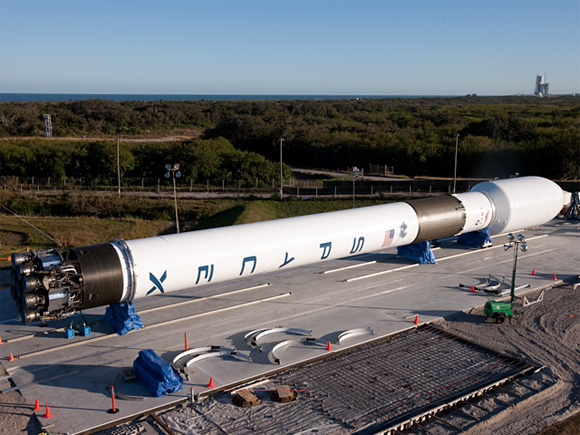As the board's resident rocket engineer, I present a few space facts mixed with plenty of opinion.
In all I find the new budget bittersweet, but feel it is probably the best path forward. I've dumped most of my thoughts on the matter here. All in all it has the potential to be a fun couple of decades ahead.
1. It may have flaws (all vehicles do), but the space shuttle is an amazing engineering accomplishment and its the only NASA I've known. It'll be sad to see the last launch.
2. It is a terrible feeling to be working on something for 5 years and then have it ripped out from under you. I hope the transitions ahead are well managed and everyone gets back on their feet as soon as possible.
3. In its history, NASA has never built rockets and spacecraft. The "building" part of it has always been done by outside private companies. The Space Shuttle was built by Rockwell, for instance. The Orion spacecraft was being built by Lockheed-Martin. However, these companies operated on a cost-plus basis (not held to a fixed price) and NASA was heavily involved in the detailed design process. In the new proposal, private companies would still build the vehicles as they have always done, but NASA would be less involved in the detailed design. They would instead chose amongst essentially finished products, ideally picking the products that are best suited to the mission at hand. I think it would be somewhat similar to how airline doesn't care so much where the bolts go so long as the airplane flies its promised performance. On the flip side, imagine if American Airlines had to approve every design detail and every design change during the development of the 787. You can see how things would get bogged down in that environment.
4. Scaled Composites and Virgin Galactic are pursuing SUB-orbital space flight. I am very excited to see this program succeed, but it is simply not relevant to compare it to an orbital program. The difference in velocity you need to achieve orbit is significant, and launch vehicle mass does not scale favorably with velocity. The propulsion development on SpaceShipTwo is somewhere around 15-20 million dollars, while Falcon 9 is more around 500 million.
5. The NASA budget has essentially not changed in total dollar amount. The same amount of money will be invested in space exploration as has been done in the past, but it will just be pursued in a different way. NASA receives around 0.5% of the total federal budget. In a diverse nation chronically living beyond its means, I don't know how we can expect more than that. We must be able to do more with what we have, and that comes through technology development.
6. As far as I can tell, Ares I was not developing technology. It was replicating lift capability that has already been developed, or is farther along in development.
Falcon 9 Heavy: 29,610 kg to LEO
Atlas 5 Heavy: 29,420 kg to LEO
Delta IV Heavy: 22,950 kg to LEO
Ares I: 25,600 kg to LEO
The Delta IV Heavy has flown, the Atlas 5 has flown in its baseline configuration, and hopefully the Falcon 9 baseline will fly this year. Ares I was not close to these milestones (Ares I-X was missing the 5th solid segment on the 1st stage and the entire 2nd stage). Why spend the money on Ares? It would seem better to convert the existing Atlas and Delta vehicles and keep an eye on Falcon 9.
7. A truly private aerospace company is a rarity. Generally speaking, we all take money from the government. The government likes high technology things that go fast. It is my opinion, however, that smaller up-start companies can give the government a greater return on their dollar than larger, entrenched companies.
8. NASA has excellent researchers. Many technologies being used by private companies, such as Bigelow Aerospace, originated in NASA and were transferred to the private sector.
I would like to see that technology development at NASA continue and grow, with them getting high risk technologies for commercialization.
9. A key component to decreasing launch cost is by increasing launch frequency. The more often we launch the more we learn and the more we can spread out the engineering costs. Liquid oxygen is dirt cheap - it's the engineering and fabrication that is expensive.
10. It is unclear to me how NASA mission operations will be performed under the new system. Who is in charge of a launch with NASA astronauts on a SpaceX rocket? In a SpaceX capsule? To what extent is a launch vehicle manufacturer also a "space line"? Will Mission Control at JSC be the same as it has always been? Personally, I hope it will.

